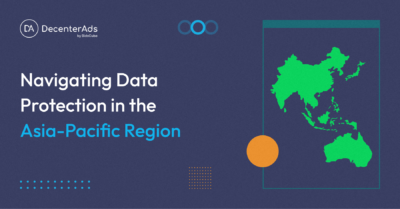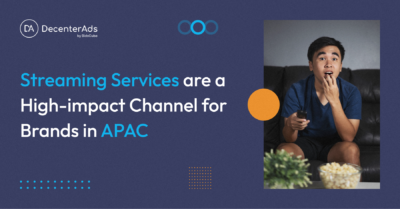Demand-Path Optimization VS. Supply-Path Optimization. What is the Difference?
Share
02 February 2024

Marketers are consistently searching for cutting-edge strategies to elevate campaign performance, maximize efficiency, and secure optimal returns on investment. Central to this quest are Demand Path Optimization (DPO) and Supply Path Optimization (SPO) – two indispensable components that have transformed the approaches of advertisers and publishers. As we delve into the intricacies of DPO and SPO, it becomes apparent that a nuanced understanding of the differences between these optimization methodologies is essential for successfully navigating the digital advertising ecosystem. Embark with us on a journey to unravel the intricacies that compose the essence of these optimization strategies and gain insights into their collective role in shaping online advertising.
Demand-Path Optimization VS. Supply-Path Optimization
DPO benefits publishers by refining the advertising ecosystem’s demand side. This process entails meticulously selecting the most effective and efficient route for demand entities, such as advertisers or buyers, to connect with their intended audiences. The overarching objective of DPO is to elevate the performance and effectiveness of advertising campaigns by strategically opting for the most suitable supply paths that effectively deliver ads to the desired target audiences.
In contrast, SPO benefits advertisers by enhancing the advertising ecosystem’s supply side. This involves strategically identifying optimal paths for supply entities, including publishers or sellers, to distribute ad inventory and meet the demands presented by advertisers. The fundamental goal of SPO is to amplify the efficiency and clearness of the supply chain, ensuring that the ad inventory originates from the most efficient and trustworthy sources.
DPO and SPO represent two complementary facets of a unified objective – bridging the gap between inventory buyers and sellers while mitigating sales channel conflicts. Essentially, they work harmoniously to optimize the connection between advertisers and publishers, ensuring a seamless and conflict-free sales channel experience. While demand-path optimization concentrates on refining the trajectory of demand entities to connect with their target audiences, supply-path optimization is dedicated to streamlining the supply chain to deliver ad inventory from the most efficient and dependable sources. Although both strategies aim to augment the overall efficiency and performance of the digital advertising ecosystem, they operate on opposite sides of the transaction.
The Example of DPO and SPO
Consider two scenarios in the process of selling ad inventory. In the first scenario, you possess knowledge of the buyer’s needs, enabling you to recommend the appropriate inventory and guide them through the optimal purchasing path. Understanding the buyer’s preferences allows you to suggest the proper inventory and facilitate a strategic supply path.
Conversely, in the second scenario, where you lack such insights, the buyer is left to navigate the process independently. In such cases, the chosen route may be, at best, ‘average.’ Consequently, both you and the buyer may experience suboptimal outcomes from the transaction. DPO is centered on assisting advertisers in achieving better ROI while ensuring that you maximize revenue as the media owner. A parallel dynamic unfolds on the supply side when SPO is employed.
What Can You Do for DPO?
- Maintain an up-to-date Ads.txt file to enable buyers to validate your partners seamlessly.
- Monitor your log-level data to identify your top-performing buyers and enhance the pathway to engage with them effectively.
- Enhance your comprehension of your partners’ strengths and weaknesses, enabling you to make well-informed decisions in collaborative efforts.
- Analyze the revenue-share contributions of your partners and eliminate those who don’t contribute sufficient value to the demand path.
- Assess your buyers, considering factors like malvertising concerns, low-quality ads, and payment issues, as these issues can have long-term repercussions. Strive to distance your site from such buyers to safeguard your overall performance.
What Can You Do for SPO?
- Ensure the legitimacy of inventory purchases by verifying the ads.txt file, preventing unauthorized reselling of the publisher’s ad space.
- To enhance SPO, consider removing aggressive SSPs. While industry standards like ads.txt and sellers.json are in place, ad tech companies implement SPO at their level.
- Additionally, adjust the Sellers.json, which serves as the SSP’s counterpart to ads.txt, listing authorized resellers. This file acts as a safeguard against the unauthorized sale of inventory.
- Opt for a single bidding path to buy or sell inventory to maximize the effectiveness of SPO. This approach reduces the DSP’s operational costs, increases transparency, saves the advertiser money, and ensures more revenue reaches the publisher.
- Identify and eliminate costlier SSPs, redirecting ad spending towards those that deliver better results, thereby streamlining the supply path.
Summary
Demand-Path Optimization and Supply-Path Optimization are crucial strategies in digital advertising. DPO focuses on refining the demand side and optimizing advertiser routes to target audiences, while SPO enhances the supply side, streamlining publishers’ efficient distribution of ad inventory. Together, they aim to create a seamless connection between buyers and sellers.
SPO ensures advertisers a secure and efficient route to ad inventory, creating a favorable campaign environment. Conversely, DPO empowers publishers to boost revenue and establish transparent connections with advertisers. Beyond advertisers and publishers, AdTech companies, agencies, and various stakeholders also reap the benefits of these streamlined processes.
Stay up to date with our company news

06 May 2024
Your inquiry met with our response, and in this article, we will delve into the Data Protection Laws of the APAC region. In August 2023, India passed the Digital Personal Data Protection Act (DPDP), a significant law for data protection globally. This comes as part of a broader trend in […]

21 April 2024
APAC video streaming has not only revolutionized the region’s film industry but also transformed consumer behavior. With the emergence of numerous platforms, viewers can now access content on any device, from mobile phones to large TV screens. This long-anticipated shift signifies an impressive change in how consumers engage with content, […]

04 April 2024
Ad servers are a part of advertising technology employed by publishers and advertisers. Their main role is to manage, distribute, and monitor online advertisements efficiently. They act as a central hub and ensure the seamless delivery of ads to website visitors and mobile app users. Ad servers are important components […]

